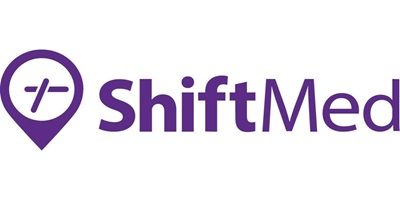While the nursing shortage has improved, it remains a critical issue. With over 1.5 million job openings across the industry—down from 2 million during the pandemic’s height—the demand for nursing professionals is urgent. The pandemic pushed many nurses to leave the profession or switch to less demanding roles. As a result, hospitals increasingly relied on traveling nurses—a temporary fix that has proven financially unsustainable.
In 2023, more than 40% of hospitals operated at a loss due to increased labor costs from the pandemic. However, travel nurses aren’t the only solution for addressing staffing gaps. The per diem model, which enables hospitals to staff based on need, offers a more tangible alternative. The model also gives nurses the freedom to choose their schedules and locations—similar to the benefits they appreciate with travel nursing.
With per diem nursing, healthcare systems can address immediate staffing shortages while tapping into significant cost savings. It supports a more agile workforce and re-engages nurses who are looking for greater control over their careers. Given the unsustainable costs associated with travel nurses, it’s time that healthcare systems rethink their staffing strategies to create a more resilient workforce.
The Current Landscape of Healthcare Staffing
The nursing shortage has roots stretching back before the pandemic. Historically, high turnover and burnout rates have plagued the profession, but COVID-19 exacerbated these issues, pushing an unprecedented number of nurses to the brink. A 2022 survey revealed that over 30% of nurses were likely to leave their roles, primarily citing unmanageable workloads and insufficient work-life balance.
As demand for registered nurses rises—projected to grow by 6% over the next decade, outpacing the national job growth average—the strain on the workforce will only intensify, especially as thousands of nurses retire, switch careers, or leave due to burnout. Although travel nurses offered short-term relief, the solution has proven costly: revenues for the largest travel nursing firms exploded from $13 billion in 2019 to $62 billion in 2023.
Even after a correction that saw their revenues dip to $47 billion, travel nurse rates remain nearly twice as high as those for full-time staff. On average, hospitals pay $87 per hour for travel nurses, compared to per diem rates between $66 and $74 per hour. This disparity drives many systems to implement cost-cutting measures such as delaying technology investments or reducing services—strategies that often compromise care quality rather than deliver lasting relief.
The Financial Case for Per Diem Nursing
Alongside higher bill rates, additional costs associated with travel nurses—such as travel reimbursements, lodging, and agency fees—can quickly add up, especially when multiple positions need filling. A report from the American Hospital Association highlights just how costly this reliance can be, revealing that nursing hours covered by contract or travel staff soared from 3.9% in 2019 to 23.4% in 2022.
As the hours worked by contract travel nurses increased, so did the associated costs. In 2019, hospitals allocated just 4.7% of their total nurse labor expenses to contract travel nurses. By January 2022, that figure skyrocketed to 38.6%. While travel nurses worked 23.4% of all nursing hours in hospitals, they incurred a much larger portion of the overall nursing labor costs— nearly 40%.
Per diem staffing offers hospitals access to a larger pool of skilled nurses while keeping costs in check—an advantage over both full-time and travel nurse arrangements. Shifting to a per diem model could deliver billions in annual savings across U.S. health systems. For a typical health system heavily reliant on travel nurses, transitioning part of its workforce to per diem staffing could significantly cut labor costs without compromising care standards.
Re-engaging Nurses through Flexibility
Over the past decade, burnout, inflexible schedules, and a lack of support have driven nurses to leave the profession, and this reality shows no signs of slowing. Addressing this exodus requires more than incremental changes; it calls for staffing solutions that fundamentally reshape nurses’ experience on the job.
Unlike traditional full-time roles with rigid scheduling or travel assignments that require extended periods away from home, per diem nursing allows healthcare professionals to choose shifts that fit their personal and family needs. The preference for control over work hours has become a core value for today’s nurses. According to ShiftMed data, 93% of surveyed nurses prioritize having control over their schedules, and 41% want more paid time off.
However, some stigma still surrounds per diem staff. Historically, healthcare leaders have held misconceptions that those who rely on per diem staffing lack commitment or stability. In reality, this model offers a valuable and flexible alternative that aligns with the evolving needs of today’s healthcare workforce, and more systems are beginning to recognize this. In fact, research has shown that facilities with a higher proportion of per diem nurses tend to outperform on quality metrics than others.
This flexibility matters not just to current nurses but also to those who have returned or are looking to return to the profession. Recent research found that it’s not enough to consider only professional factors to retain these returning nurses; personal factors must also be taken into account. According to the study, addressing work-life balance, providing recognition, and encouraging professional growth are critical for maintaining their motivation and satisfaction.
Broader Implications for Healthcare Systems
As major health networks expand and navigate fluctuating patient volumes, the per diem model can adapt alongside these changes—offering a flexible and reliable workforce capable of meeting varying demands. Over time, this model can help health systems stabilize staffing costs, reduce burnout-related turnover, and enhance job satisfaction among nursing staff. For example, large health systems in metropolitan areas have successfully implemented per diem programs to manage staffing peaks and maintain optimal care delivery.
While fixed schedules and long-term roles have traditionally defined healthcare staffing, the industry’s and its workforce’s needs have evolved. For healthcare executives, this shift presents a unique opportunity to modernize staffing strategies and focus on solutions that balance patient care standards with workforce satisfaction. Turning to the per diem model enables health systems to drive an industry-wide move toward sustainable staffing practices that prioritize resilience and cost-efficiency.


















